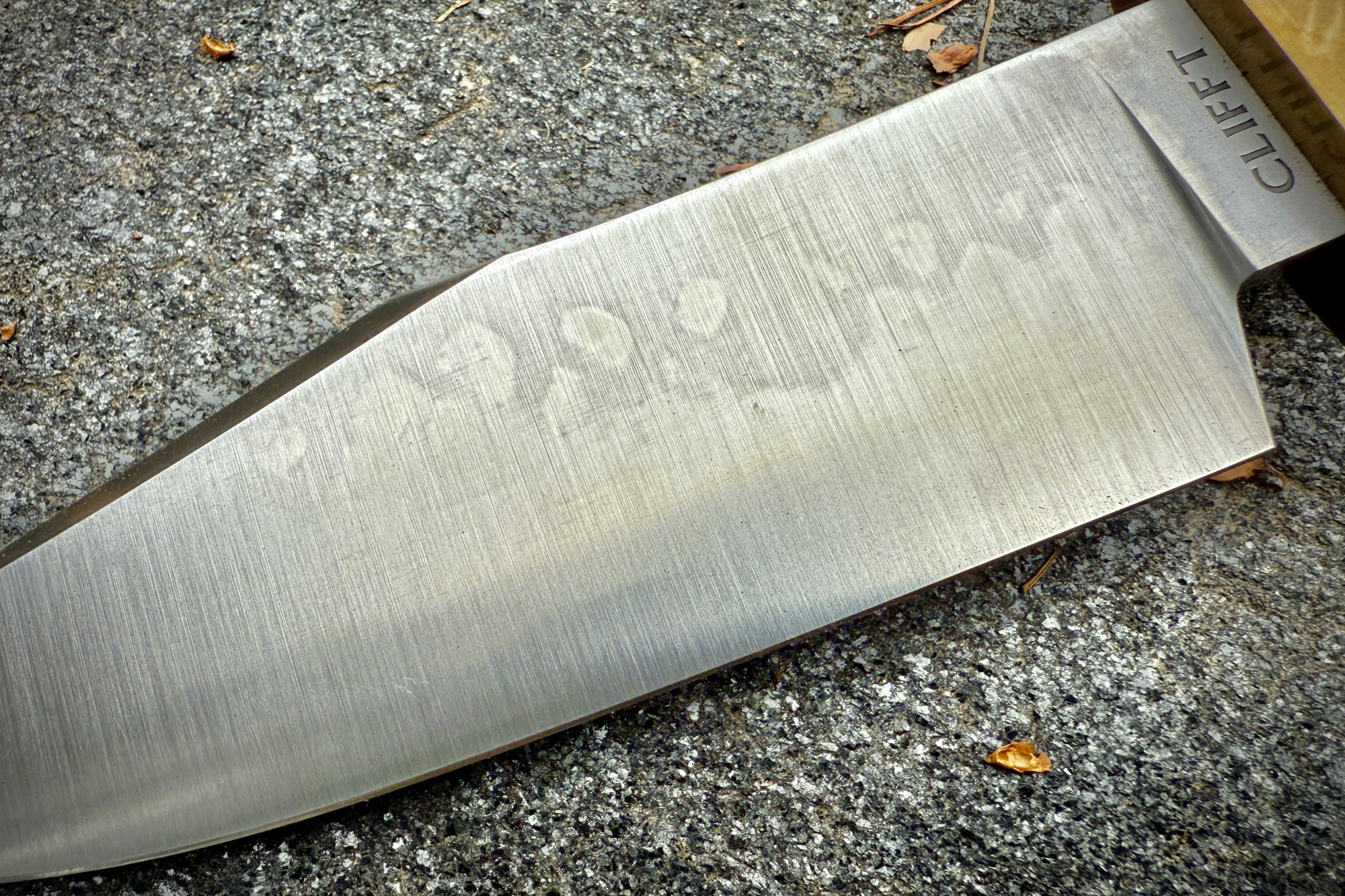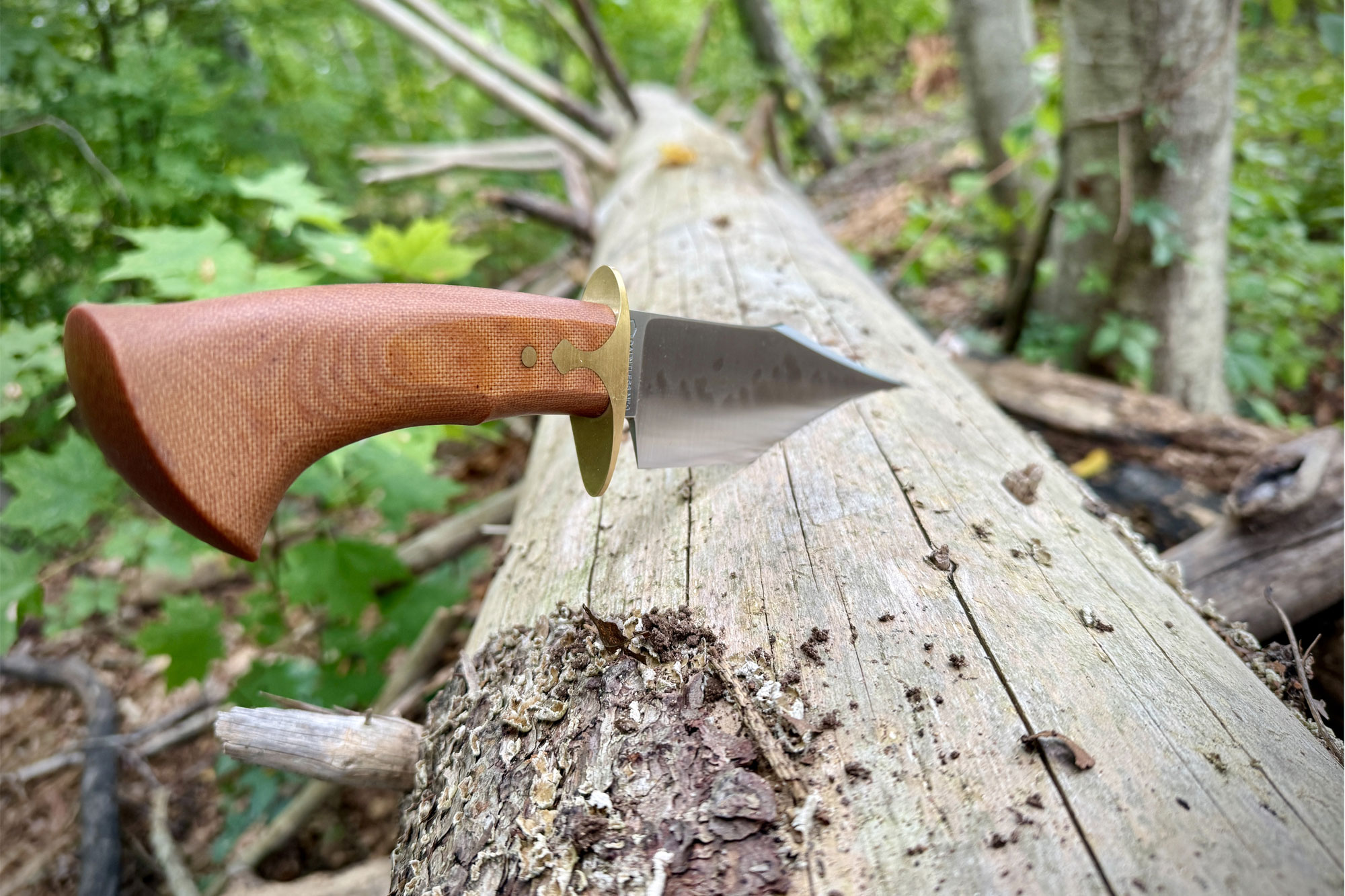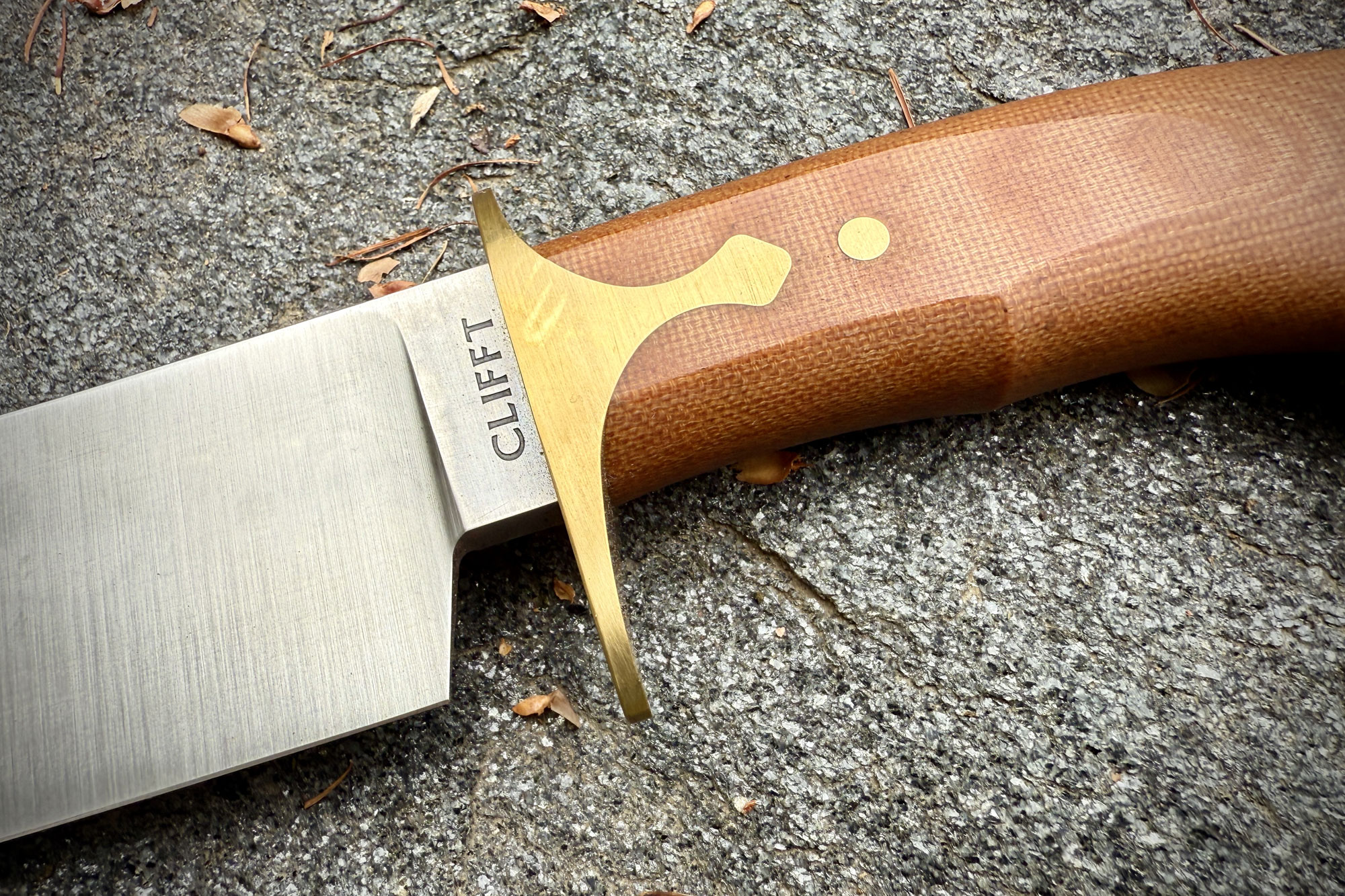It’s a big and impractical knife by today’s standards, but at one point, the Bowie was America’s quintessential outdoor knife. Arguably the first standardized knife design, the original Bowie was forged by blacksmith Jesse Clifft as a commission for Rezin Bowie — brother of the famed American frontiersman, Jim Bowie. History tells us that Jim Bowie used the eponymous knife to defend himself at the infamous Vidalia Sandbar Fight.
Following news of the incident, demand spiked. Within a decade, Bowie died at the Battle of the Alamo, and the name — and blade — were immortalized.
At the tail end of 2024, Dauntless Manufacturing announced it would fashion its own version of the famed Bowie, this time carrying the name of the blacksmith behind the iconic design. The Clifft is a successful attempt to tie in American history with modern craftsmanship; it’s big and bold, but it’s also beautiful and effective.
In the end, I realized that as impractical as this knife is in today’s world, it’s the most practical outdoor knife around.
In short: Dauntless Manufacturing’s Clifft blends American history with modern manufacturing to create a Bowie knife that lives up to the blade’s iconic reputation. Due to its size and aggressive look, it may not be your first choice for a belt knife. But the Clifft Bowie could be a perfect companion for the outdoor enthusiast, or someone who prefers life off-grid. It’ll set you back a pretty penny, but if you care for it, it will serve you well.
-
Great balance for a big knife -
Solid Micarta handle -
The Bowie shape -
The quality of the sheath is admirable
-
Everyone is moving to smaller and lighter -
Expensive
Dauntless Clifft Bowie Knife Review
Design & Features
With an overall length of 13 inches and sporting a 7-inch–long blade, the Clifft is about the same size as a modern hatchet.
It has a partial tang construction, which means the blade is inserted into the handle and held in place by a pin. Where a hatchet might be better at chopping because of its leverage and weight, the Clifft can still get the job done — and much more.

All the usual suspects for a Bowie knife are here: curved handle and guard to lock your hand in place, and a clip-point blade for piercing, stabbing, slicing, and shaving.
However, the materials here are modern and arguably better. Micarta handle scales replace what would have traditionally been wood. This increases the knife’s life by making it impervious to weather conditions while also increasing the grip factor.
The 12Cr1 steel, a Swedish high-carbon steel, outpaces other carbon or stainless steels with its toughness and incredible edge retention. This allows for minimal blade maintenance with prolonged use (more on this below).
As for its sheath, Dauntless again teamed up with Chattanooga Leather Works. The result is an ambidextrous sheath that looks great and functions even better. It allows the Clifft to sit lower on your waist and offers both easy deployment and secure retention.
125Cr1 High-Carbon Steel
With a wide variety of popular, complex, and effective modern steels available, Dauntless chose 125Cr1 because it “wanted a steel that could hold a razor sharp edge, take a hamon, and harken back to traditional Bowie aesthetics while still performing under modern demands.”
Taking that one step deeper, it wanted a steel that could have differing hardnesses so the spine could be tough while the blade remained more stable and, therefore, longer-lasting. This is achieved through differential heat treatment.
According to Dauntless, differential heat treatment “involves clay-coating the spine of the knife before heating and quenching the blade. The uncoated edge cools faster, hardening into martensite, while the coated spine cools slower, forming a tougher pearlite or bainite structure. This hardness contrast creates the hamon — a visual and functional transition line between hard and soft zones.”
Practically, this translates to a blade that will hold its performance over time. So, it can withstand hard use without breaking or needing to be sharpened all the time.
History Made Real
Every once in a while, I wax nostalgic and think of my ancestors: traders and fur trappers who settled in Vermont and Connecticut and conquered the Connecticut River. They were people who survived in the outdoors and made a living from that survival. I would like to think some of them carried Bowie knives, but I can’t be sure.


Traditionally, Bowie knives were more popular in the South, and they fell under a lot of legal scrutiny after the Civil War. At that time, surviving in the wilderness took a backseat to modern society. The Bowie was seen as a weapon used to solve an argument, more than a knife that helped conquer the American frontier. This led to many owners keeping them hidden or locked in cedar chests in their bedrooms and attics.
But there’s no denying how important the Bowie was to the world of knives. It was the first standardized knife design and still one of the only varieties known synonymously by name or shape. Seeing what Dauntless did with it, I wanted to see how it could hold up for my outdoor life.
I also love Micarta and a good hamon, the latter of which isn’t very common in the world of outdoor knives today.
In the Field
Even with its length and heft, I was in complete control of the Clifft. The craftsmanship is beyond compare. I like what Dauntless does overall — the brand has an eye for detail and its other knives are made to meticulous specifications. Still, aside from its canvas Micarta handle, the Clifft is unlike anything else Dauntless does.


Out and about, I felt more prepared than usual with the Clifft hanging off my hip, like I could take on any variety of tasks. In my mind, the Clifft could help make fire, prep food, and everything else that would otherwise require a belt knife and hatchet.
I was particularly curious about batoning. When I reached out to Dauntless about this, the brand reassured me that the differential heat treatment meant that I could safely baton for days. So I did, and I ended up with enough wood for a riverside fire.
Even with an overall length of 13 inches, the Clifft is far from cumbersome. Your hand locks nicely in place between the guard and the curved butt of the handle. For performing tasks like chopping, batoning, and plunging, you have total control; your hand won’t slide or float.
On the flip side, the Clifft was a little finicky at food prep. Though it cut and sliced extremely well, anything fine or refined was hard to achieve. This made slicing and cutting chicken and peppers for my (world-famous) trail fajitas a bit chunky, but it still got the job done.
This brings up the Clifft’s surprising balance between size and weight. You would expect the Clifft to be a 2-3–pound paperweight. In reality, it’s only 11.3 ounces. Stretched across its full length, 6 inches of which are handle, you’re left with a knife that is easy to wield and not cumbersome.
In the end, the Clifft may replace my favorite hatchet for upcoming fall hikes. In comparison to a hatchet, the Clifft is more compact and easier to swing. Just note, it is important to make sure the Clifft is clean and dry before stowing it away, since 125Cr1 will tarnish.
Conclusion: Who’s It For?
The outdoors in the midst of an ultralight era in the outdoors. Even some of the most experienced outdoorists prefer to keep the overall weight and size of what they carry down.
But while I enjoy a lightweight backpack or sleeping bag, I will never skimp on the tools I carry. I recognize that because of its size (and price), the Clifft is a polarizing knife, and I know this review will have some people rolling their eyes. My response to them is that the great outdoors will always present formidable challenges.


But for those who can stomach the upfront investment in a knife like the Clifft, this tool will handle no shortage of rugged tasks. And all of the nostalgia that comes with a Bowie knife aside, the Clifft is as reliable as it is beautiful. At $575, it’s not a beginner knife or a simple, standard EDC.
It’s meant for enthusiasts and will serve anyone who wears it on their belt well.
Read the full article here




